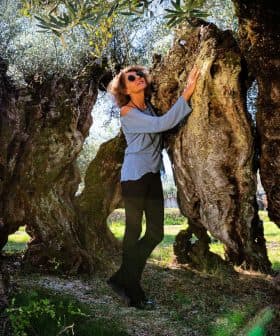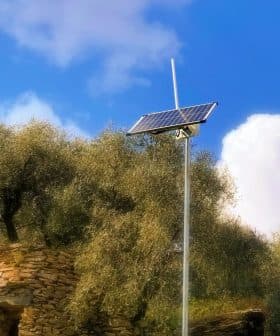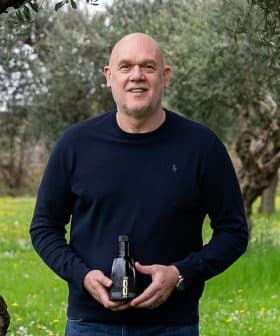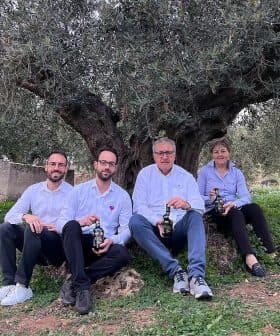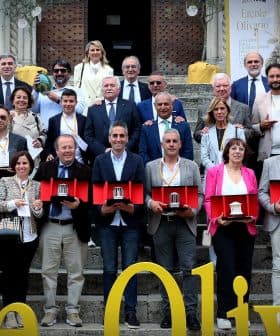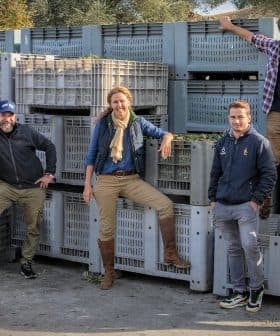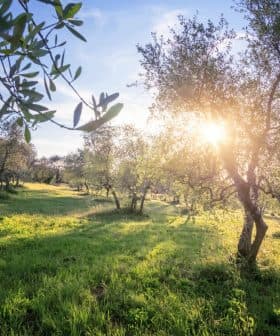Triumph of Northern Italian Producers Rooted in Profound Bond with the Land
Farrmers in five northern Italian regions overcame drought to achieve another year of high-quality extra virgin olive oil production.
 Francesca Casadei and her family at Tenuta San Giuseppe
Francesca Casadei and her family at Tenuta San Giuseppe Producers from northern Italy, particularly in regions such as Emilia-Romagna and Veneto, were recognized as some of the best in the world at the 2023 NYIOOC World Olive Oil Competition. Italy was the most awarded country at the competition, with producers like Cordioli Erminio and Palazzo di Varignana earning Gold Awards for their high-quality olive oils. Additionally, Tenuta San Giuseppe from Romagna was recognized for their commitment to quality and sustainable practices, showcasing the excellence of Italian olive oil production.
After the exhaustive assessments by the 2023 NYIOOC World Olive Oil Competition analysis team, producers from northern Italy once again demonstrated they are among the world’s best.
We are delighted with this result, especially since it arrived at the end of a challenging harvest.
The award-winning farmers – hailing from Emilia-Romagna, Liguria, Lombardy, Trentino Alto Adige and Veneto – reflected on a harvest characterized by a slight production increase compared to the previous one; an ‘on-year’ in the olive trees’ natural alternate bearing cycle helped them to counter the effects of the intense drought that have gripped Europe and Italy, particularly in the north of the country.
Thanks to their commitment to quality, Italy was the most awarded country at the NYIOOC and had one of the highest success rates, obtaining 174 awards from 224 entries.
See Also:The Best EVOOs From ItalyAmong these well-deserved accolades is the Gold Award earned by Cordioli Erminio for his blend Campo delle Marogne blend produced in Veneto.
“This is the third recognition we have received from this prestigious competition, and it fills us with joy,” said Ceil Friedman, who manages an orchard with 750 olive trees among the rolling hills above Verona with her husband.
“In our olive grove, there are autochthonous Grignano and Favarol varieties, which, along with some Frantoio, constitute the original nucleus of the orchard that is 150 years old,” she said. “Twenty-five years ago, other trees were planted; more recently, we added 180 Itrana trees.”
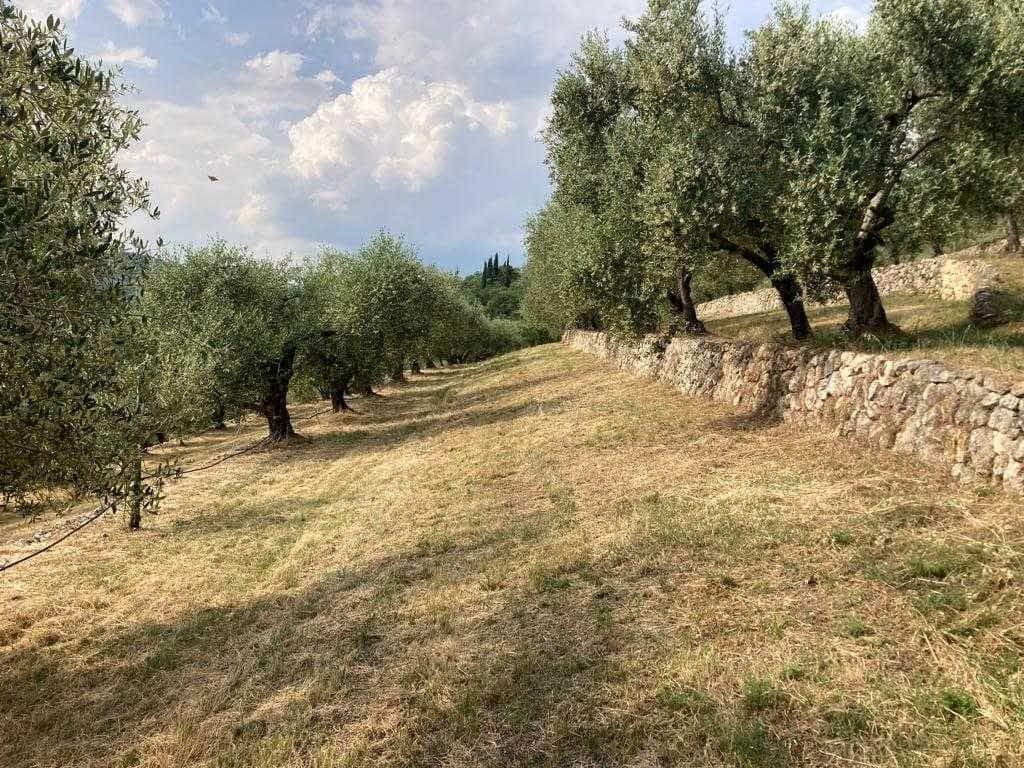
(Photo: Cordioli Erminio)
Expectations have been placed on the flowering phase after the conclusion of the pruning operations at the end of March.
“The most delicate moment of the vegetative cycle is coming,” Friedman said. “Now, we are grateful because we had some light rains that started before Easter, which benefit the plants and are ideal to be absorbed by our clayey soil.”
Last year, the intense heat and drought put production at risk, but Cordioli Erminio managed to achieve a high level of quality.
“Other farmers in the area also made excellent oils,” Friedman said. “If, on the one hand, we had lower volumes, the quality obtained has paid off. Every harvest has its challenges.”
“Three years ago, for example, in the summer, we had to cope with various weather adversities, from hail to whirlwinds,” she added. “Yet, our focus is quality, and the satisfaction we obtain with our premium products encourages us to continue working in the grove with commitment and care.”
Two farmers in Emilia-Romagna earned the highest accolade for extra virgin olive oils obtained from native regional varieties.
Palazzo di Varignana earned two Gold Awards for a monovarietal and a blend produced on the hills of Castel San Pietro in the province of Bologna, Emilia.

(Photo: Palazzo di Varignana)
“We are pleased to receive these two recognitions,” production manager Chiara Del Vecchio said. “Vargnano is a monocultivar of Nostrana di Brisighella, an autochthonous variety of the area that represents us so well.”
“It expresses elegance with a hint of tomato leaves and a balance between bitterness and spiciness,” she added. “Blend Blu is a fine fusion of Correggiolo, Leccio del Corno and Pendolino, which are harvested and crushed separately, then combined in the mill by our oleologist. This is the creation process of all our blends.”
Other varieties of central Italy, including Frantoio, Leccino, Maurino Vittoria, Leccio del Corno and Verzola, complete the composition of the 200-hectare orchard, home to 150,000 trees.
An irrigation system, along with some reservoirs created in the lower areas of the property, ensures the trees receive enough water. “This allows us to recover the rainwater and reuse it to conserve the resources,” Del Vecchio said.
She emphasized that with the establishment of the resort in 2015, the company brought olive growing back to the hills of Varignana.
“The olive tree cultivation in this area was interrupted more than two centuries ago,” she said. “We carried out recovery work in the area.”
“After acquiring some abandoned orchards, we re-established the olive groves remodeling the hill, setting up a modern planting pattern with the option of carrying out a mechanical harvest,” Del Vecchio added.
The company will soon inaugurate a mill. “The works to build the structure should finish in July,” Del Vecchio said. “State-of-the-art machinery will be assembled in August and will be ready in time for the next harvest.”
In neighboring Romagna, Tenuta San Giuseppe produced the Gold-Award-winning Il Centenario brand from more than 400 centenary Correggiolo trees.
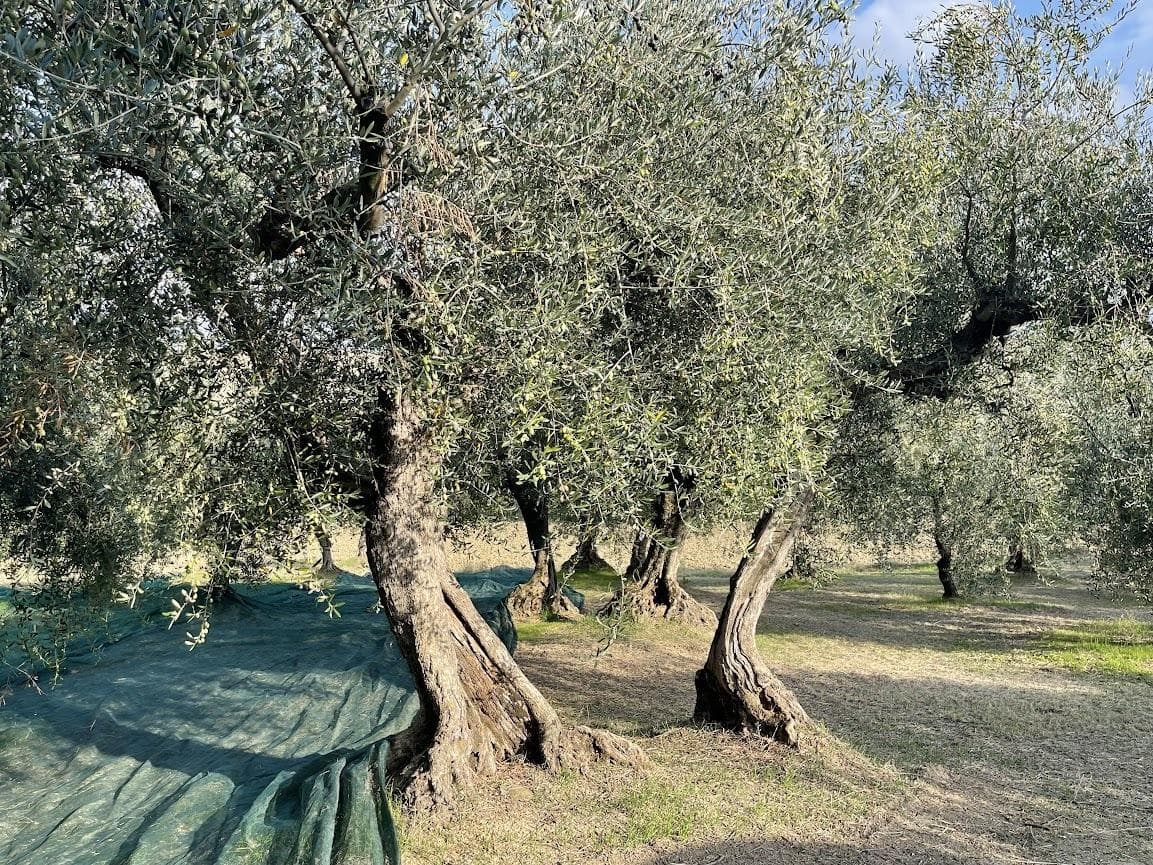
(Photo: Tenuta San Giuseppe)
“It is a great feeling to receive this recognition, which rewards our commitment to quality,” said Francesca Casadei. “We created the brand in 2021 when we founded the company, but my husband and I are fourth-generation olive growers since these orchards belonged to our great-grandparents and grandparents.”
Their grove of 2,000 olive trees, including several rows of Leccino, is nestled on the hills of Saludecio in the province of Rimini.
“The nearby Adriatic Sea mitigates the climate, creating a good environment for olive cultivation despite the harsh winters,” Casadei said. “We have big frost approximately every 20 years, making it difficult for the trees to reach great dimensions due to the cold effects.”
“Still, they have tall trunks because formerly, according to the widespread practice of polyculture, wheat was grown under them,” she added. “Sometimes, they are difficult to manage, but we care a lot about them, which are the landmark of our beautiful landscape.”
The estate also includes a restaurant and hotel that follows sustainable and ethical principles, paying particular attention to the choice of suppliers and the environmentally friendly management of the company.
“Our goal is a respectful production,” Casadei said. “We are converting to organic and have plans to expand the olive grove, with our ancient olive trees always at the heart of it all. They are a true heritage to be preserved and an essential part of our beautiful territory that we aim to safeguard.”
The 2023 NYIOOC saw the return of Liguria to the world stage with Tèra de Prie and its Taggiasca monovarietal, which earned a Silver Award.
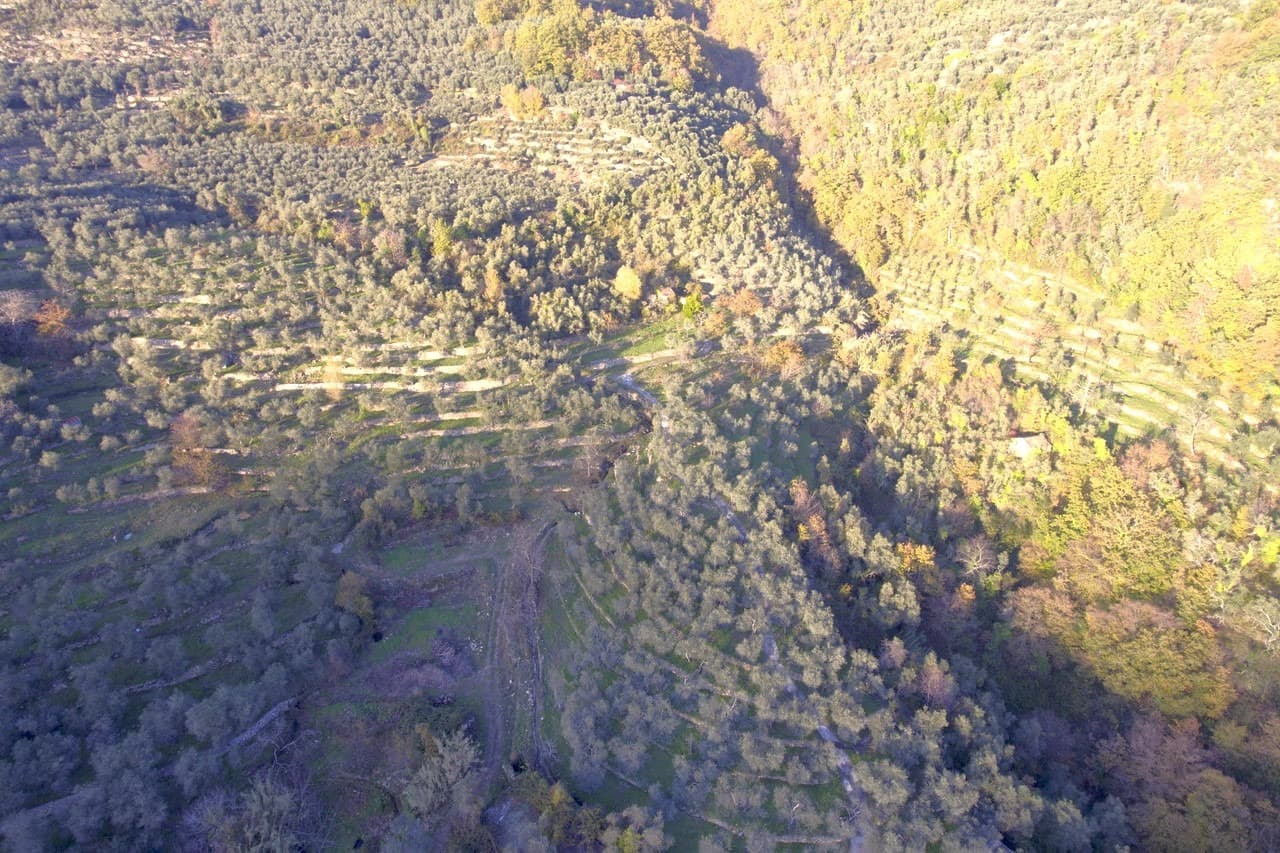
Tèra de Prie’s terraced olive groves
“We are delighted with this result, especially since it arrived at the end of a challenging harvest,” said Nicola Ferrarese, whose family company manages 4,000 trees scattered over 16 hectares of terraced land in the Upper Impero Valley.
Due to the landscape, the local growers shaped the steep slopes into cultivated terraces supported by dry-stone walls over the centuries. These have become invaluable landmarks intertwined with the Ferrarese family’s search for quality.
“We carry out constant maintenance to preserve the area,” Ferrarese said. “Today, for example, we just finished restructuring a dry stone wall.”
“Overall, every year we recover about 250 square meters of these structures, which provide several benefits: they slow down soil erosion; ensure that the water flows, avoiding stagnation; and allow us to work on areas with extreme slope.”
Given the peculiar setting, optimizing the space on the terraces becomes a key element. With this purpose, a general reform pruning is being carried out.
“We must consider that, due to the type of terrain, we already have a lower number of trees,” Ferrarese said, explaining that his trees were planted in the 1400s at a distance of six meters from each other.
“Over time, the initial pattern got lost, especially due to the effects of frequent frosts,” he added. “Indeed, when a tree was cut down due to frost damage, suckers were reborn from the roots, developing into as many as four or five trunks for each crown, dispersing energy and reducing light. This can be avoided by cutting some trunks and recreating the original setting.”
“Managing the agricultural lands in certain areas of the Mediterranean like ours requires extra work and expense,” Ferrarese concluded. “However, our efforts are largely rewarded by the great results we achieve.”
Share this article


